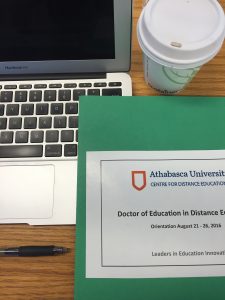For the last assignment for the Creative Commons Certificate Course, I chose to write an essay in which I reflected on how I have advocated for openness in the past, and how I would advocate in the future. I enjoyed going back through the modules and reminding myself of what I learned over these past 10 weeks, as part of the reflective process.
As the school year is beginning in some parts of the United States this month and for the first time in quite awhile, I won’t be teaching in a school library, it felt right to be nostalgic about ways that I have come alongside my former colleagues to support openness in learning. As I am continuing to read and write on OER and OEP for my doctoral studies, it also felt right to reflect on what future advocacy might look like, based on what I have learned.
The following is my essay.
Advocating for Openness in K-12 Schools – By Sarah Hammershaimb
In module 1.2 of the Creative Commons Certificate Course for Librarians, I learned that education is fundamentally about sharing. Sharing is a value of openness. In teaching and learning, knowledge, expertise, and feedback are shared between instructors and learners. This idea supports my desire to see K-12 education grow in openness.
As an elementary school teacher librarian who has observed student engagement that accompanies open pedagogies, I want to advocate for open educational resources (OER) and open educational practices (OEP). My advocacy for smaller changes in the past has usually followed Rogers’ innovation cycle. I look for individuals who might be early adopters and partner with them, providing resources, information, or technical assistance. As other school staff witness the engagement of students and ease of adoption of new practices, they are likely to join the movement. However, advocating for OER and OEP at a district level feels more complex.
In advocating for OER with educators and district personnel, I would describe their cost-effectiveness, flexibility and suitability for digital learning spaces. Additionally, I would highlight the ability of OER to support personalization, differentiation, and localization of learning. Furthermore, the use of OER by both students and staff builds digital literacies and fosters 21st century skills.
One of the most significant benefits of OER, I believe, is their ability to transform teaching and learning through the use of OEP. These practices increase student voice and choice, support active learning, engage students in knowledge creation, and provide networked environments where learners can engage with each other and with content in creative, meaningful ways. In K-12 learning, I see aspects of OEP already in use. Perhaps this is the place to begin OER advocacy.
In my research, I have learned that while OER is in use in some school districts, many educators are either not aware that the materials are OER, or they are not aware of the affordances of the open licenses (Seaman & Seaman, 2020). Hence, these materials are not used to their potential. The in-depth look at copyright, the knowledge about the affordances of different CC licenses, and the modules pertaining to the 5R’s are important takeaways from this course for future advocacy. The materials that I created could be adapted into professional learning resources about OER and open licenses.
While enrolled in this course, I learned about resources to support future advocacy. The Creative Commons Open Education Platform, the Open Education Conference folk, and organizations like SPARC provide a network for information and community. The CC Search Engine is a helpful tool for educators looking for images. Repositories of OER materials, such as OER Commons, OpenStax and CK12, could assist school districts searching for OER.
Despite the many benefits of OER and OEP, barriers abound in K-12 education. Textbook adoption cycles/policies hinder OER consideration. Fear of change, educator time limitations, and lack of leadership support contribute to hurdles. On a personal note, many teacher librarian jobs are being eliminated due to budget cuts, even though these roles effectively connect educators and open content/practices.
Seaman, J. E., & Seaman, M. (2020). What we teach: K-12 educator’s perceptions of curriculum quality. Bay View Analytics. Released under a Creative Commons Attribution 4.0 International (CC BY 4.0) https://www.onlinelearningsurvey.com/oer.html

This work is licensed under a Creative Commons Attribution 4.0 International License.



